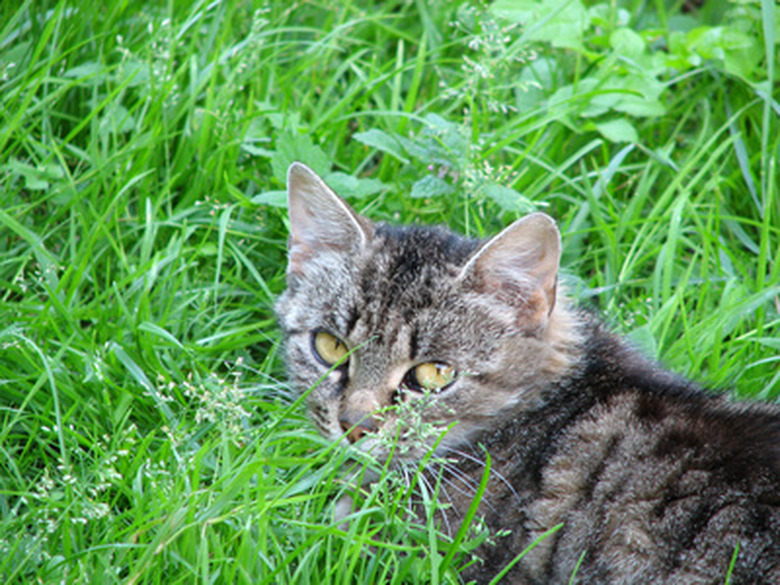Grasses That Are Healthy For Cats To Eat
Although cats are carnivores, eating grass is normal feline behavior. However, some common houseplants such as oleander, aloe, azalea and lily can poison cats. Provide cats with grasses that will help their digestion to satisfy their need for fiber.
Although cats are carnivores, eating grass is normal feline behavior. However, some common houseplants such as oleander, aloe, azalea and lily can poison cats. Provide cats with grasses that will help their digestion to satisfy their need for fiber. Pet stores often carry grass that has been specially manufactured for cat consumption.
Benefits of Eating Grass
Cats are carnivores, but they sometimes eat green plants. Doctors Foster and Smith suggests that cats used to get their fiber from the digestive tract contents of their grass-eating prey in the wild. Plants provide cats with dietary fiber to smooth bowel movements and help with weight control. Fiber also helps cats vomit and get rid of accumulated fur balls. Besides making the cat's environment more attractive, providing grass also helps cats become healthier.
- Although cats are carnivores, eating grass is normal feline behavior.
- Provide cats with grasses that will help their digestion to satisfy their need for fiber.
Healthy Grasses
Wheat grass contains chlorophyll, carotene, antioxidant vitamins and minerals to help cats develop healthy blood and muscle tissue. Other animals such as dogs, birds, rabbits, guinea pigs and reptiles also often eat wheat grass as a healthy dietary addition. Other grasses that are healthy for cats include rye, oat and barley. Catnip, catmint, cat thyme and valerian are not grasses, but they are safe plants for cats to eat. Besides growing plants, you can also add lettuce or parsley to your cat's food bowl to help meet its fiber needs.
Commercial Products
Pet stores often sell a product called cat grass. It contains grass seeds that are healthier than turfgrass for cats. The mix usually contains common oats, although it also sometimes contains wheat and rye grass. Cat grass grows well indoors any time of the year. Prepare a container that measures 6 to 8 inches in diameter and fill it with fresh potting soil. Sprinkle the seeds over the surface of the potting soil and cover lightly with soil. Add water and provide bright light. When the leaf blades reach a height of 2 inches, place it where the cat will find it.
- Wheat grass contains chlorophyll, carotene, antioxidant vitamins and minerals to help cats develop healthy blood and muscle tissue.
- Catnip, catmint, cat thyme and valerian are not grasses, but they are safe plants for cats to eat.
Keeping Cats Away from Toxic Grass
Even when they have healthy sources of fiber, cats sometimes still eat other available plants. Place toxic plants where cats have absolutely no access to them. Keep other plants out of reach and spray them with a cat repellent, which releases smells that cats don't like and sometimes imparts an unpleasant taste as well. Adding mothballs to the soil can also discourage cats from coming. If you see your cat approaching the plant, spray your cat with a little water from a water pistol or make a loud noise to deter it from eating the plant.
